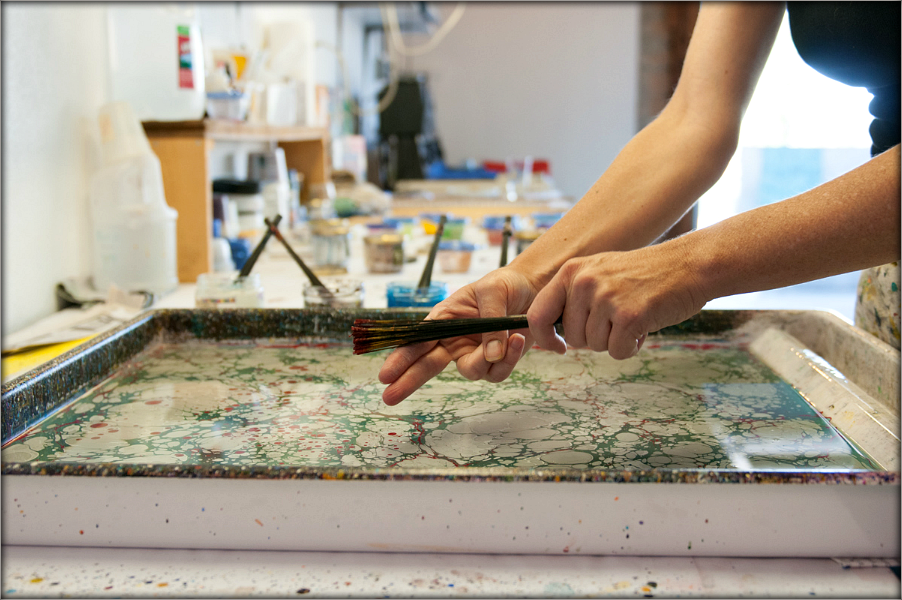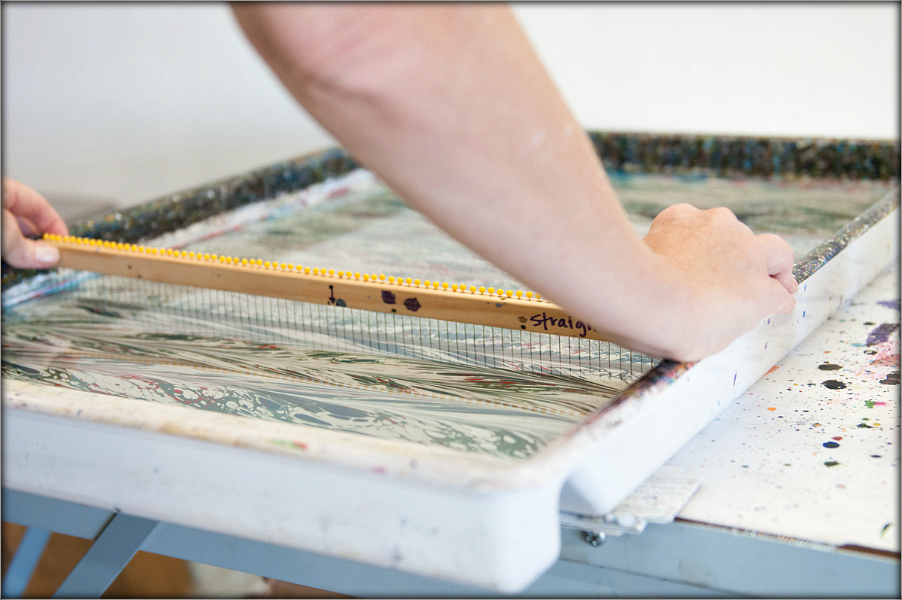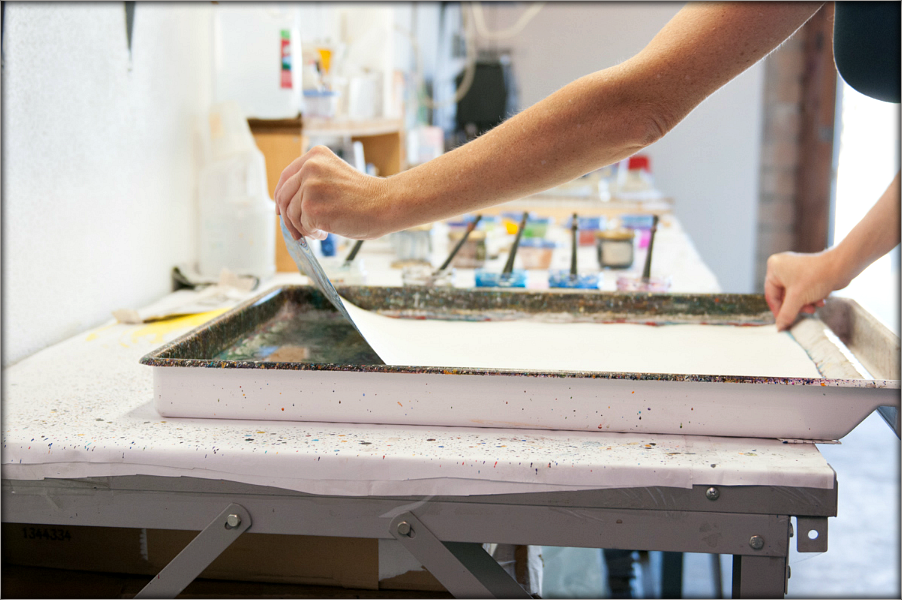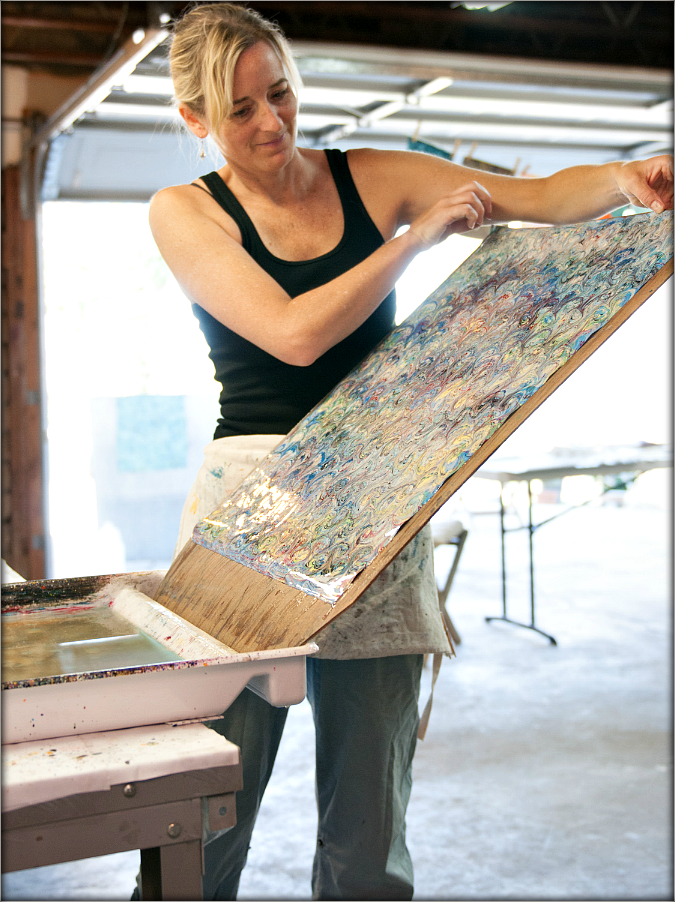Marbling is a centuries-old art form that involves floating paint on water made viscous with carrageenan, a seaweed extract; creating intricate patterns and unique designs using special, handmade tools; and then laying paper, fabric, wood, or other porous materials onto the surface of the bath where the image is immediately and permanently transferred.
Marbling is a game of surface tension: the bath needs to be thick enough to hold up the paints and the paints thin enough to spread across the top of the bath. Surface tension is also what keeps the paints from amalgamating. Each color retains its individuality. Red and blue will not mix to make purple, no matter how hard you try.
Most people are familiar with the marbled papers commonly found as endpapers in old books. Or they have seen it while traveling through Istanbul (where a particular style of marbling called Ebru has its origins) or Venice (where marbled papers were enthusiastically embraced after being introduced via the Silk Road). It is an elegant art form that is thousands of years old with a deep and rich history.






